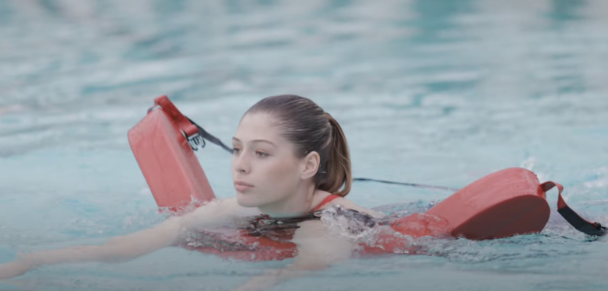The Significance of Lifeguard Training
Lifeguard training is the cornerstone of a successful career in lifeguarding, providing the essential skills and knowledge needed to protect and save lives. The American Lifeguard Association offers comprehensive lifeguard training programs that prepare individuals to take on the critical responsibilities of a lifeguard. This training is more than just a prerequisite for certification; it’s a transformative experience that equips you with the confidence and competence to respond to emergencies effectively. Whether you’re overseeing a public pool, a beach, or a water park, lifeguard training ensures you’re ready to act when lives are on the line.
The Core Components of Lifeguard Training
Lifeguard training involves a multifaceted curriculum that covers everything from water rescue techniques to first aid and CPR. The American Lifeguard Association’s training programs are designed to be thorough and rigorous, ensuring that all participants are well-prepared for the challenges they will face as lifeguards. This training includes both theoretical lessons and practical exercises, allowing you to develop the skills needed to perform rescues, administer first aid, and manage emergency situations with confidence. The goal is to create lifeguards who are not only technically proficient but also capable of making quick, sound decisions under pressure.
The Role of Lifeguard Training in Community Safety
Lifeguard training plays a crucial role in enhancing community safety. Lifeguards are often the first responders in aquatic environments, and their ability to act quickly and effectively can mean the difference between life and death. The American Lifeguard Association emphasizes the importance of thorough training to ensure that lifeguards are prepared to handle any situation that arises. By undergoing lifeguard training, you are not only gaining valuable skills but also contributing to the safety and well-being of your community. Certified lifeguards serve as protectors, ensuring that everyone can enjoy the water safely.
The Process of Lifeguard Training
The process of lifeguard training involves a blend of classroom instruction and hands-on practice. The American Lifeguard Association’s programs are structured to provide a balanced approach, combining theoretical knowledge with practical skills. During training, participants learn about water safety protocols, emergency response procedures, and rescue techniques. They also engage in simulated scenarios to practice these skills in a controlled environment. This comprehensive approach ensures that by the end of the training, participants are fully equipped to handle real-life emergencies and perform their duties as lifeguards effectively.
Certification Through Lifeguard Training
Completing lifeguard training with the American Lifeguard Association leads to certification that is recognized nationwide. This certification process involves both written exams and practical assessments to ensure that all participants meet the high standards required to become professional lifeguards. Certification is not just a formal requirement; it’s a validation of your skills and readiness to take on the responsibilities of a lifeguard. With certification in hand, you can pursue job opportunities at pools, beaches, and aquatic facilities across the country, confident in your ability to protect and save lives.
Lifeguard Training and Career Advancement
Lifeguard training is not just the beginning of a lifeguarding career; it’s also a stepping stone to broader opportunities in the aquatic and public safety industries. The skills and knowledge acquired during lifeguard training are valuable for roles beyond traditional lifeguarding. Many certified lifeguards go on to pursue careers in aquatic management, emergency medical services, and safety training. The American Lifeguard Association’s lifeguard training programs provide a solid foundation for these career paths, opening doors to a variety of rewarding and impactful professions.
The Lifeguard Training Experience
Participating in lifeguard training is an enriching experience that goes beyond skill development. The American Lifeguard Association’s training programs foster a sense of responsibility, teamwork, and leadership. Lifeguard training challenges participants to push their limits, both physically and mentally, as they prepare for the demands of the job. The experience also provides opportunities to connect with others who share a commitment to safety and lifesaving. The bonds formed during lifeguard training often extend beyond the classroom, creating a supportive network of professionals dedicated to protecting others.
Lifeguard Training for Ongoing Development
Lifeguard training doesn’t stop after initial certification; ongoing education and recertification are key to maintaining proficiency. The American Lifeguard Association offers recertification courses and advanced training opportunities to ensure that lifeguards remain current with the latest safety practices and techniques. Continuous learning is essential in a field where quick thinking and up-to-date knowledge can save lives. By participating in ongoing lifeguard training, you demonstrate your commitment to excellence and ensure that you remain an effective and capable lifeguard throughout your career.
The Impact of Lifeguard Training on Public Safety
Lifeguard training has a profound impact on public safety, as it prepares individuals to prevent accidents and respond to emergencies in aquatic environments. The American Lifeguard Association’s training programs are designed to create lifeguards who are vigilant, proactive, and skilled in lifesaving techniques. As a certified lifeguard, you play a critical role in ensuring that everyone who enjoys the water does so safely. The training you receive empowers you to make a difference in your community, providing a safe environment for swimmers of all ages.
Conclusion: The Lifeguard Training Legacy
Lifeguard training with the American Lifeguard Association is more than just a certification process; it’s a journey toward becoming a protector and lifesaver. The skills, knowledge, and experience gained during lifeguard training prepare you to take on the vital role of a lifeguard with confidence and dedication. As a certified lifeguard, you carry the responsibility of ensuring the safety of others, and the training you’ve received is the foundation of your ability to fulfill that role. The legacy of lifeguard training is one of service, commitment, and the unwavering determination to save lives.



